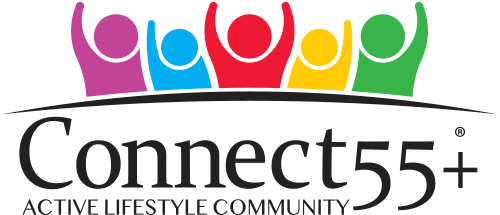Recent data shows that the average retired American household requires around $55,000 annually. While many older adults prefer the comfort and familiarity of home, they may underestimate the real financial impact of aging in place. Will their savings be enough?
Here’s where the cost of senior living becomes a hot topic as retirement approaches for millions of Americans. Independent living communities average $3,065 per month nationwide, but this number doesn’t tell the full story.
The real question isn’t just about monthly fees, it’s about understanding what you’re actually signing up for financially. Too many retirees discover to their dismay that staying in their family home comes with hidden expenses that can quickly outpace community living costs.
Let’s take a closer look at the numbers and see how they stack up.
How Much Does it Cost to Live Alone as A Senior?
Living alone as a senior typically costs $2,500-$4,500 per month when you account for all expenses, excluding mortgage payments.
But as we know, our monthly bills aren’t just utilities and groceries. Property taxes, insurance, and routine maintenance create a steady financial drain that catches many people off guard. Home maintenance alone averages 1-3% of your home’s value each year, which equates to approximately $2,000-$6,000 yearly for a $200,000 property.
Here’s where things get tricky. Unexpected costs often blindside retirees who thought they had everything figured out. You may suddenly need grab bars in the bathroom. That’s a few hundred dollars. Perhaps you need a major bathroom remodel for your safety, which can set you back another $20,000 or more. Add lawn care, snow removal, and housekeeping services, and you’re spending another $200-$500 monthly.
Additionally, security systems and emergency response services become more important as you age, typically running $30-$100 monthly.
55+ Community Living Costs
Even if you’re not mentally ready for a retirement community, it’s well worth looking at the numbers and planning ahead.
What does 55+ community living cost monthly?
Independent living in 55+ communities ranges from $1,500-$4,000 monthly, with a national median of $3,065.
Community pricing varies a great deal based on where you live and what amenities you want. Basic communities in lower-cost states might run $1,500 monthly, while luxury spots in expensive markets can hit $4,000 or more. Most folks find their sweet spot somewhere between $2,000-$3,500 monthly.
What’s included in that monthly fee? Usually, maintenance, landscaping, utilities, and access to all those community perks you see in the brochures.
Because of the range of locations, features, and amenities, it’s worth taking a tour of your preferred community and getting the complete financial picture from the staff.
Side-by-Side Financial Comparison
| Expense Category | Living Alone (Monthly Est.) | 55+ Community (Monthly Est.) |
| Housing Payment | Varies by mortgage/rent | $1,500–$4,000 |
| Maintenance/Repairs | $165–$500 | Included |
| Security Systems | $30–$100 | Included |
| Social Activities | $50–$200 | Included |
| Landscaping/Lawn Care | $100–$300 | Included |
The numbers tell an interesting story about predictability versus surprises. Living alone might look cheaper on paper initially, but home repairs and maintenance create budget headaches you can’t plan for.
Community living offers something many seniors appreciate: financial predictability. Instead of losing sleep over surprise roof repairs or dying HVAC systems, you pay one monthly fee that covers most of your worries.
Quality of Life Considerations
Does community living improve senior health outcomes?
Yes, research shows that community living reduces isolation and improves both mental and physical health outcomes for seniors.
Here’s a sobering fact: social isolation affects nearly 35% of seniors living alone. That leads to higher healthcare costs and a lower quality of life. Community living naturally tackles this problem through built-in social opportunities and shared spaces where friendships happen organically.
Safety features in 55+ communities go beyond what most people can set up at home. These include gated access, on-site staff, and emergency response systems. These amenities offer peace of mind that’s tough to put a dollar amount on, but which both residents and their families find invaluable.
What about staying active and healthy? Easy access to community amenities like fitness centers, pools, and organized activities encourages active lifestyles. In some cases, seniors simply don’t have access to quality health amenities at home, or they may suffer from transport challenges. Having these opportunities, quite literally, on your doorstep makes staying fit and healthy a pleasure.
How Do Your Numbers Add Up?
As with any big decision, taking the time to collect accurate information and draw realistic comparisons is the best way to begin.
Start by adding up your current monthly expenses, including those irregular costs like home repairs averaged over time. How does that total stack up against community pricing in areas you’d actually want to live? Remember to factor in what services come with community fees.
What will your healthcare needs look like in five or ten years? Communities often make it easier to access healthcare services and can adapt to changing mobility needs better than your current home setup.
Take time to research communities thoroughly. As we’ve seen, amenities and pricing structures vary from place to place. Some charge extra for dining plans or premium services, while others bundle everything into their base price.
Making Your Decision Count
The cost of senior living goes way beyond comparing monthly payments. What kind of lifestyle do you want? How’s your health trending? Do you miss having people around to chat with over coffee?
Community living often delivers better value for active seniors who appreciate amenities and social opportunities. Those predictable monthly expenses help with budget planning and wipe out surprise repair bills that can wreck a fixed income.
Maybe you prefer your independence and have substantial home equity built up. Aging in place might make financial sense initially. But have you thought about potential future costs for accessibility modifications and increased care needs?
Connect 55 specializes in helping seniors through these important decisions by offering detailed cost comparisons and community information tailored to your individual needs and budget. We work hard to make your transition to community living both affordable and something to look forward to.
Schedule a tour or chat with our team for answers to all your questions.






